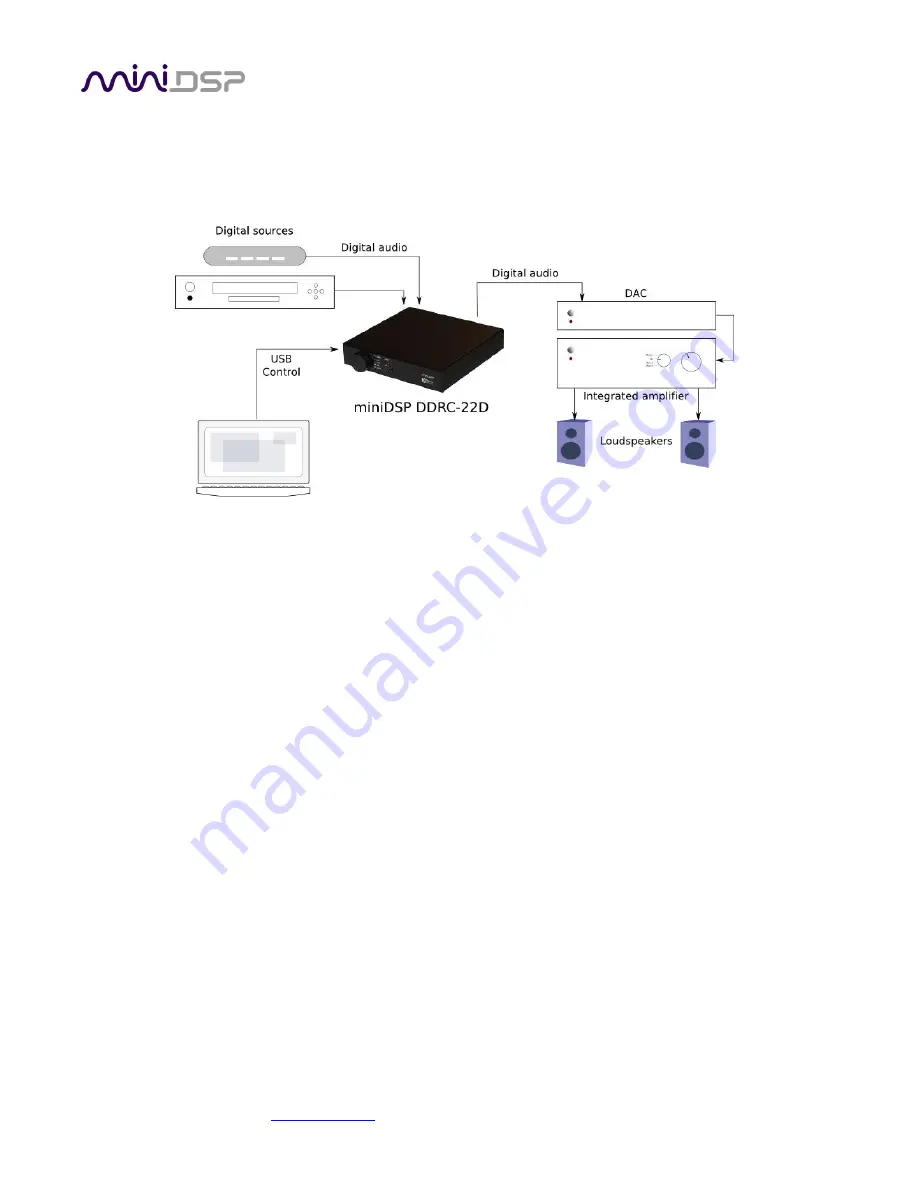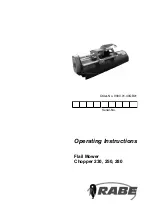
miniDSP Ltd – Hong Kong / Email :
info@minidsp.com
/ Features and specifications subject to change without prior notice
8
The DDRC-22D (digital input/output) is typically inserted into the digital signal chain just before D/A conversion;
for example, between one or more digital sources and a DAC. From there, a regular power amplifier or an
integrated amplifier complete the system. Variants on this theme include the use of an integrated amplifier with
a digital input or the use of a digital input of an A/V receiver, in which case a separate DAC is not required.
Computer connectivity is used to perform acoustic measurements and generate digital room correction filters.
Up to four sets of correction filters can be stored on the
Dirac Series
processor and recalled from the front panel
or via an infrared remote. Once the processor is fully configured, the computer is no longer needed.
1.2
H
OW
D
IRAC
L
IVE
®
WORKS
Each model in the miniDSP
Dirac Series
of audio processors includes Dirac Live®, a premium mixed-phase room
correction technology. This technology is used not only in home stereo systems but also in cinemas, recording
studios, and luxury cars.
As with any room correction system, Dirac Live® corrects the system’s
magnitude response
(often referred to
imprecisely as “frequency response”). In contrast to fully automated systems, Dirac Live® corrects the
magnitude response towards a user-adjustable
target response
. The target response takes account of the
natural frequency range of the loudspeaker system and the normal effects of loudspeaker dispersion on the
measured
in-room
magnitude response.
In addition, Dirac Live® corrects the system’s
impulse response
, which reflects how the system responds to a
sharp transient such as a drumbeat. Reflections, diffraction, resonances, misaligned drivers, and so on, all
combine to smear out the transient. An ideal loudspeaker has none of these, so correcting the impulse response
makes the speaker in the room behave much more like that ideal loudspeaker. The impulse response is a critical
factor for accurate sound-staging, clarity and bass reproduction. Dirac Live® employs a sophisticated analysis
algorithm to make the optimal correction across the
whole
listening area, not just at a single point.
Differences between the impulse responses of the two loudspeakers at the listening position will also affect
soundstage and imaging. The more similar the impulse responses, the more easy it is to “trick” the brain into
thinking that the loudspeakers are not really there, and that the sound emanates from a virtual stage spanned
by the physical speakers.









































